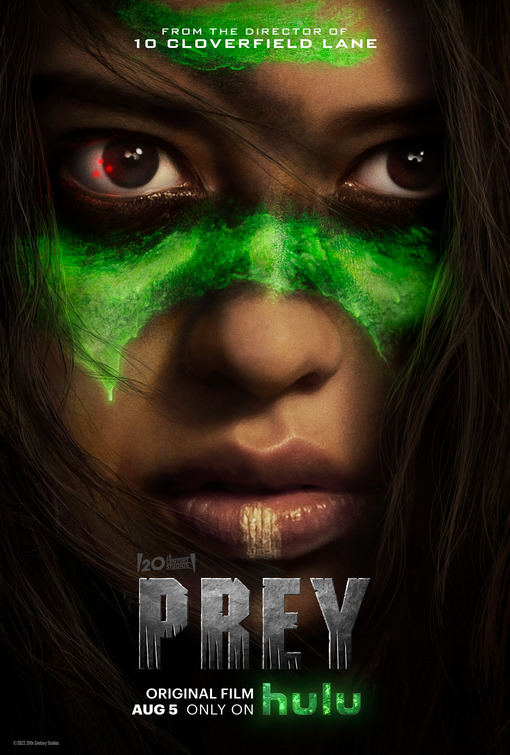Prey is the first Predator sequel to come close to the magic of the original John McTernan film starring Arnold Schwarzenegger. In 1719, we follow a tribe of Comanche in the Northern Great Plains. Naru (Amber Midthunder) dreams of being a respected warrior like her big brother, Taabe (Dakota Beavers), and feels her time is finally at hand. Taabe cautions her about the weight of responsibility, and several of the tribe give her looks of judgment as she embarks on her hunts.
On one of her treks, Naru discovers strange tracks that convince her that the tribe is not safe from a new predator. This film purposefully takes its time, using the opening act to define life for Naru within her tribe. Once the relationships are established within the tribe, the rest of the film indulges in all the bloody mayhem you’d expect from a Predator film. However, it’s clear that the film would’ve benefited from additional funding from 20th Century Studios for its CGI battles. This is a film that’s deserving of a theatrical release, although it’s sure to be a a major success for Hulu.
Screenwriter Patrick Aison and director Dan Trachtenberg make great use of the setting, where French trappers and Native Americans are both competing across the plains. It’s an engaging portrait of life 300 years ago before European colonists would completely upend indigenous life.
The Predator series, at its core, has been a underdog tale where the primitive people of Earth have battled against the technologically superior alien warrior. The dynamic makes it easy to root for the Earthly heroes, but it’s even easier when you have a protagonist like Naru, fighting for respect as a woman and adolescent. The character is shown as headstrong but capable, and her mistakes provide opportunities for her to learn and better strategize later.
The action sequences are smoothly handled by Trachtenberg (10 Cloverfield Lane) who favors verisimilitude without sacrificing the visual artifice. The photography is gorgeous, and the emphasis on natural light and environments add so much the overall authenticity. Trachtenberg also knows what visual style will work best with which moments. The scenes with the Predator stalking in the fog play with claustrophobic suspense. The action has a very pleasing sense of construction that clearly presents the pieces that are needed for the scene-to-scene goals, and then the characters will adapt as necessary through organic complications. This is just good action construction, and Trachtenberg fields each like an expert.
To deal with the predator’s well-established infrared vision, the writer cleverly establishes a tribal medicine that’s used on injured warriors. Naru learns that this flower medicine not only treats the injured, but it can make an individual invisible to the Predator. It’s the most creative way to trick the predator since Schwarzenegger rolled in mud back in 1987.
Prey is a well-crafted action movie built upon solid characters and patient, clear plot and action development. When it comes to gore, the CGI is sadly detracting from the otherwise well-designed film. This is particularly evident in the grizzly bear vs. Naru vs. Predator fight.
However, Trachtenberg wisely brought in special effects veterans Alec Gillis and Tom Woodruff Jr. to handle the redesign of the Predator creature, creating a creature and weapon set unique to the 1719 setting. Hopefully, this well-received entry in the Predator franchise will send 20th Century Studios back into monster movie business.
Letter Grade: B



